Via Alas A Blog.
The solutions for parentless (and unparented) children have varied tremendously over history and they vary, in part, based on the particular technological, economic, and cultural realities of the time. For more than 75 years, one answer was the orphan train.
In the 1850s,
…thousands of children roamed the streets of New York in search of money, food and shelter–prey to disease and crime. Many sold matches, rags, or newspapers to survive. For protection against street violence, they banded together and formed gangs. Police, faced with a growing problem, were known to arrest vagrant children–some as young as five–locking them up with adult criminals (PBS).
At the same time, farmers in the country were having as many kids as they could because kids were great farm labor. They could use as many hands as they could get.
So, in 1853, a minister named Charles Loring Brace started the orphan train. Brace believed that farmers would welcome homeless children, take them into their homes, and treat them as their own. So he rounded up the kids, got parental permission when he needed it, and took the city kids to the country. Between 1854 and 1929, the trains took over 100,000 children to adoptive parents in 47 states and Canada.
On the orphan train (image here):

Children lined up to board the train (1920) (image here):
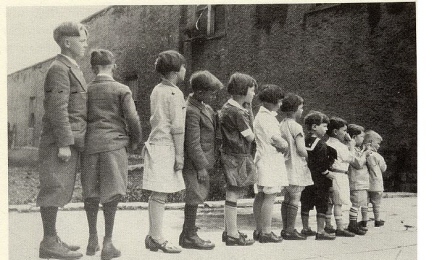
The orphan train in Michigan:
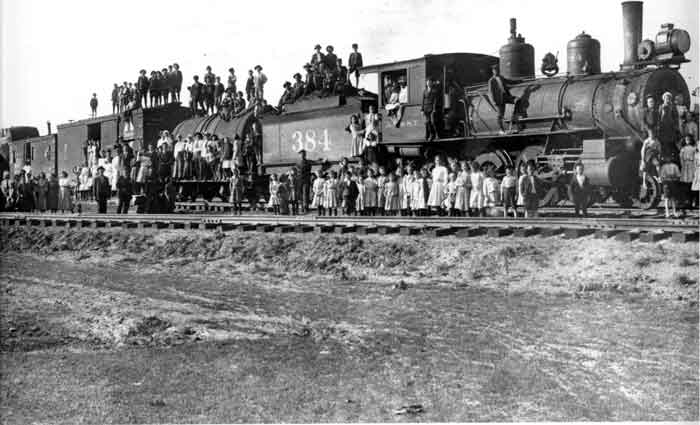
Orphan train children (images here):
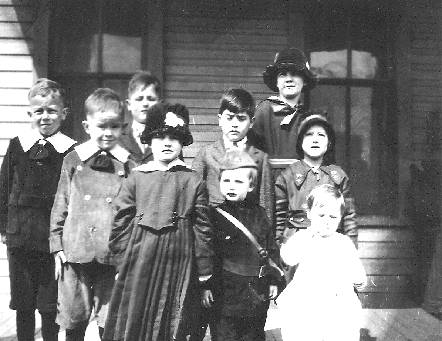
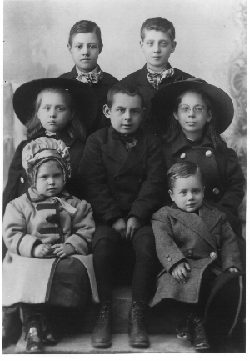
Howard with his adoptive parents, the Darnells (1910) (image here):

Orphan train children with their chaperones in Bowling Green (1910) (image here):

An ad and a news story from the Tecumseh Cheiftan (1893) and Nehama County Herald (1915) respectively (found here):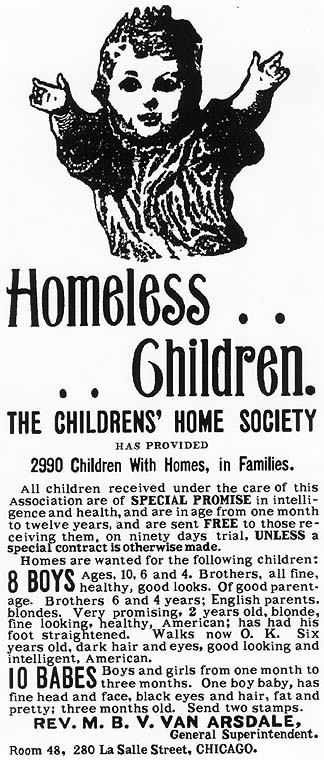
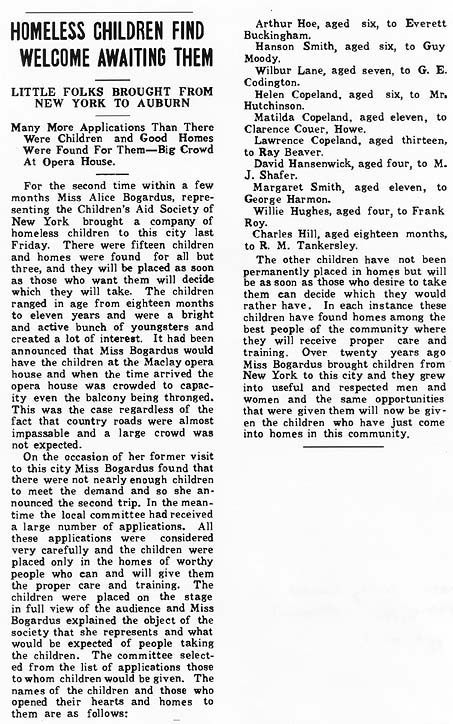
We may have flight attendants instead of stewardesses these days, but the call button on this Greyhound bus (on its way from Sioux Falls to Omaha) reminds us that the serving class is figuratively, if not literally, female:
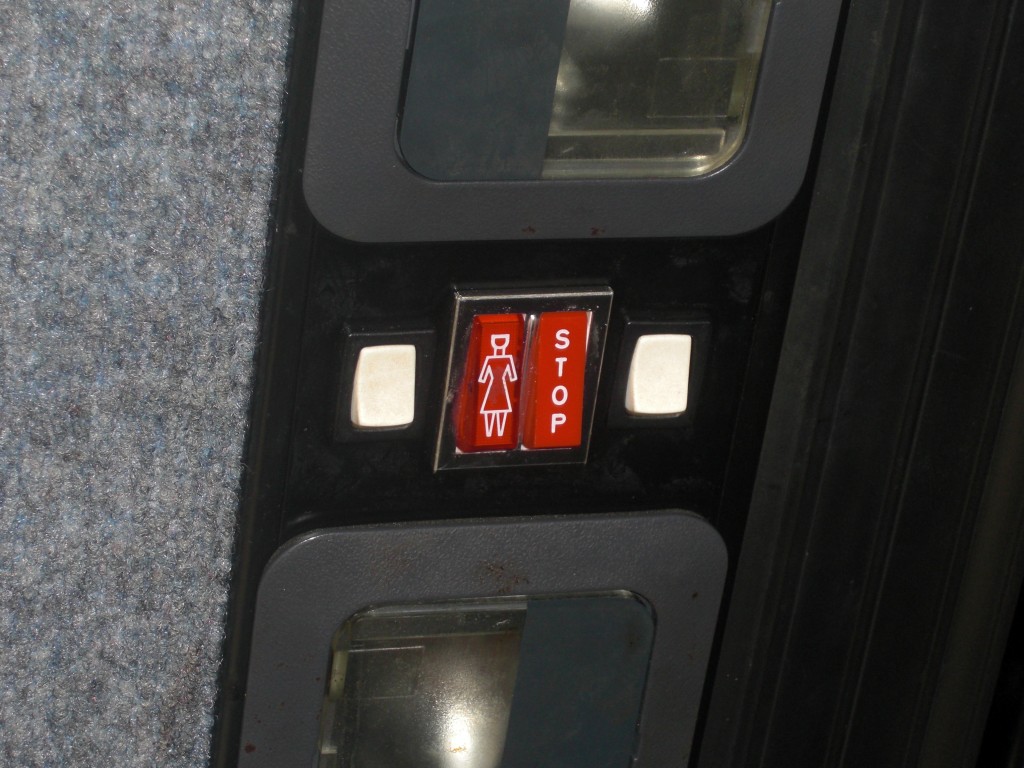
Also see this post on sexism in aviation (then and now) and this contemporary Continental ad with sexual innuendo.
Thanks to Stephen W. for the picture!
If you’re looking for a documentary about the U.S. porn industry, PBS now has the entire documentary “American Porn” available for free online.
Anna sent in a link to Courage beer’s “take courage” ad campaign, in which men are shown in various situations where they are told to”take courage” in the face of a proctology exam, ugly sweater, and the following:
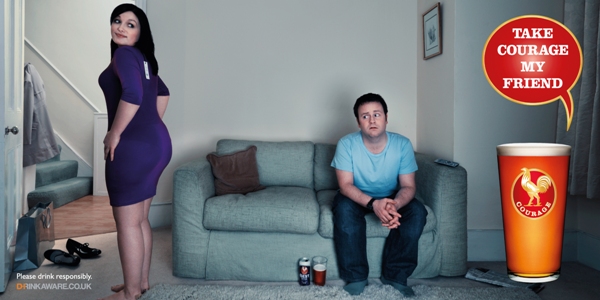
Both Anna and I are a little confused by this one. What’s he supposed to be needing courage for, exactly? Is it that his girlfriend is asking if her butt looks big? Or that she thinks she looks good and he’ll have to be seen with her dressed like that? When I first glanced at it I thought it was her thinking she looked good and him being grossed out, but when I looked closer, I think it’s the “does my butt look big?” scenario. Is he supposed to take courage and lie, or take courage and tell the truth?
Notice how the ad uses a not-super-skinny woman in it, but ridicules how she looks. Clearly the answer to “does my butt look big in this?” is supposed to be “yes,” and we’re supposed to find her laughable in that outfit. What I’m not quite sure about is whether she’s being presented as inherently laughable, or as a woman who is attractive and it’s only the dress that makes her unappealing. Thoughts?
Anna was also interested in how the ad portrays relationships between men and women. For some reason it reminds me a little of the last video in this post of Errol Morris Miller beer commercials, in which men clearly find women trivial and annoying.
UPDATE: In a comment, Christian suggests, “It’s about him drinking her beautiful. Get a Courage and you get over it (the butt) or her attitude “does my butt look big?”.”
And Trevira adds,
I think this ad directly refers to the ‘insecure woman’ character played by Arabella Weir in the popular UK tv sketch show ‘The Fast Show.’ The character’s catchphrase was ‘does my bum look big in this?’ (Weir even ended up writing a novel with the same title!).
So there may be a cultural reference here that escapes us non-Brits.
Franklin suggested that we post about some points people are making about Dora the Explorer’s makeover. Originally drawn like this…
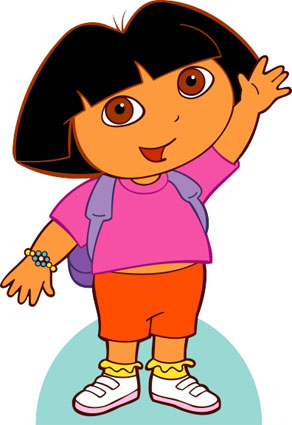
…Dora has been re-envisioned and now looks like this:
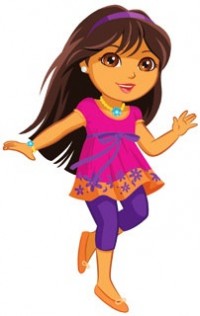
Wicked Anomie writes:
The producers insist that the new tween Dora will still be like the old one in personality and interests. Just more fashionable, with ballet flats, long hair, jewelry, and makeup. And she wears a dress. Not the choicest attire for galavanting in the woods going on adventures, but hey…
I asked my six-year old daughter what she thought of the new Dora. She likes her better. Why?
“Well, I like that her hair is longer, and she’s wearing a dress. And a necklace. And I like her shoes. And that other one, she’s fat in her belly and her clothes don’t fit right. I don’t like her shoes, either. And her hair’s all short and she doesn’t have a necklace.”
Gwen and I, however, are not surprised at this new feminized Dora. About a year ago we were in Toys ‘R Us in Henderson, NV, and were so struck by the Dora the Explorer toys that we took pictures of every single one of them. Almost all of them feature feminized activities such as cooking, taking care of babies, and fashion and accessories. There are 15 images so I’ve put them after the jump:
The Cornucopia Institute provides a link to Dr. Phil Howard’s webpage, which has all kinds of awesome graphics to illustrate concentration in the organic food sector. This one shows acquisitions by several major food corporations (sorry the images are small–there’s a link after each one that takes you to a bigger version, or you can easily see all of them at Dr. Howard’s website). For all but the third image, the color scheme is yellow = multinational processor, green = organic brand, blue = investment firms, and red = organic versions of mainstream brands.
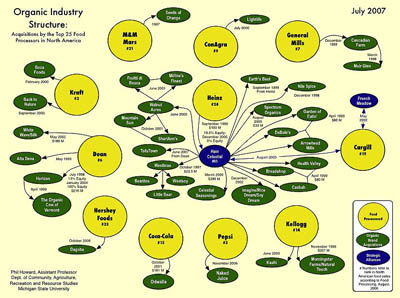
Click for a larger version.
Creation of private-label organic lines for particular retailers:
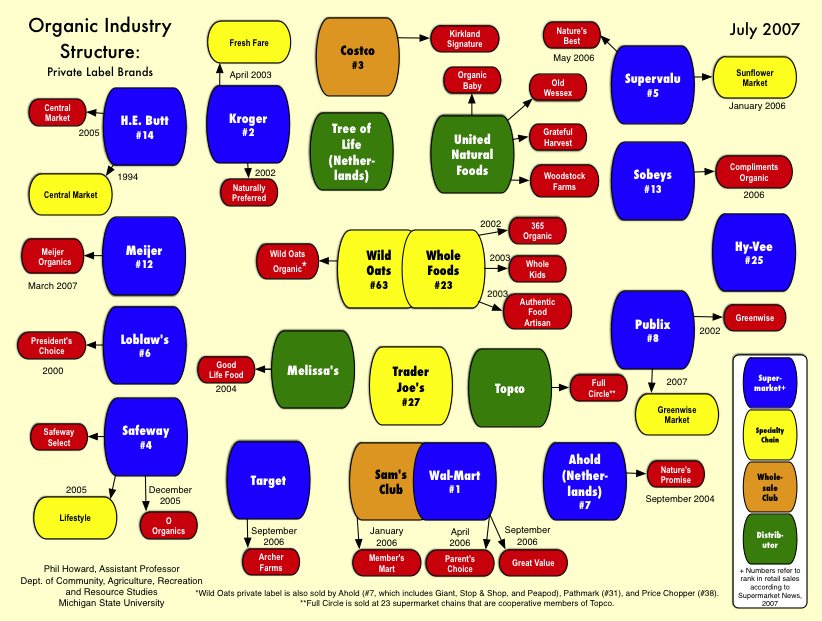
Concentration of organic labels:
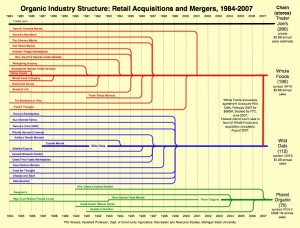
Larger version. Dr. Howard has also created an animated version of consolidation in the organic food sector, which I highly recommend, unless you are easily made dizzy.
Major independent organic processors:
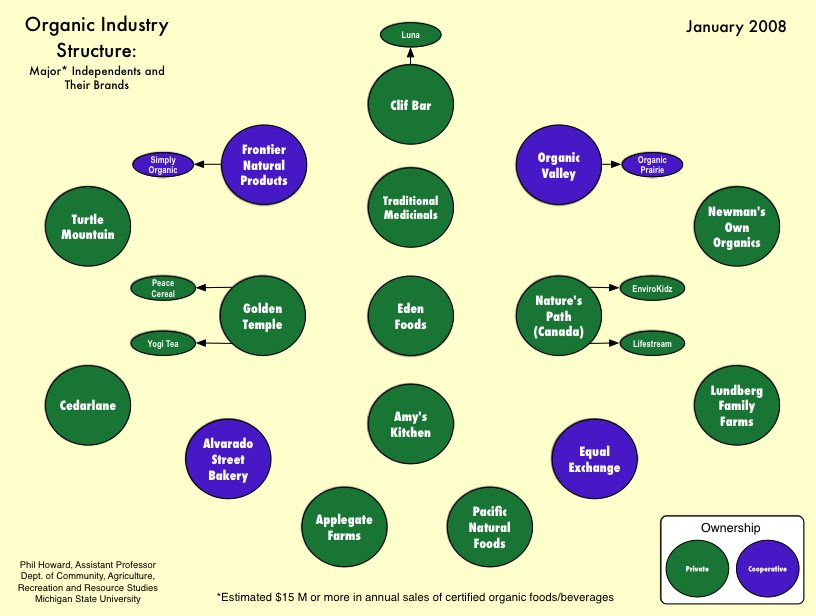
NEW! John found some updated information at Phil Howard’s site. Introductions of new organic brands:

Acquisitions, as of June 2009:
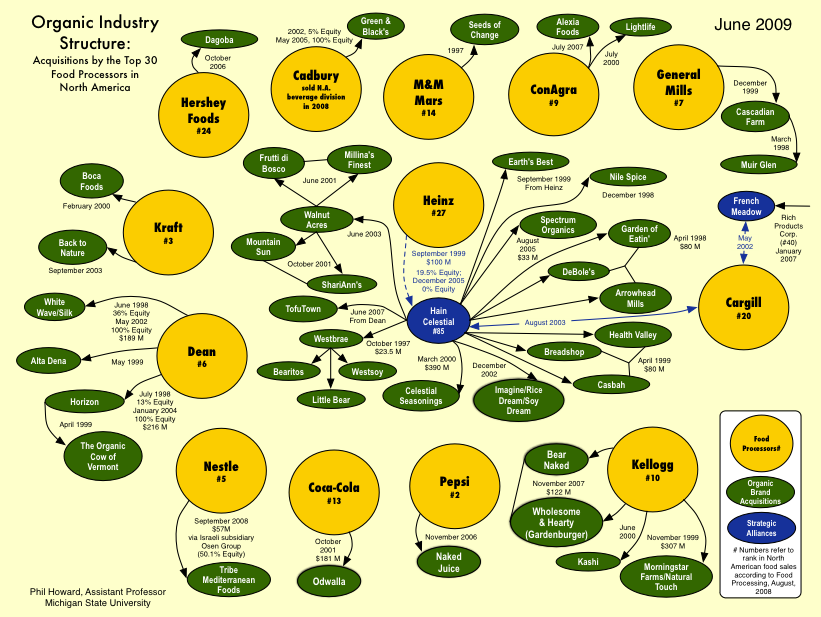
For an article providing more detail and more graphics see: Howard, Philip H. 2009. “Consolidation in the North American Organic Food Processing Sector, 1997 to 2007.” International Journal of Sociology of Food and Agriculture 16(1), 13-30. [online at
http://www.ijsaf.org/archive/16/1/howard.pdf]
These clothing ads from 1928, featured on Jezebel, portray an ideal female form that is wildly different than the one we have today. Note the straight lines (no hips or boobs) and very short hair cuts:
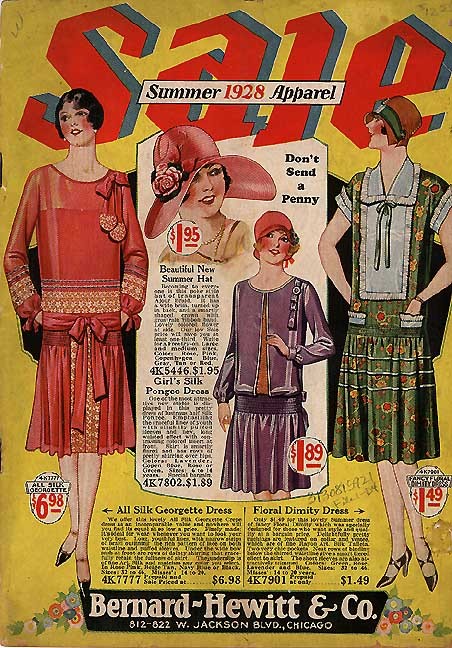
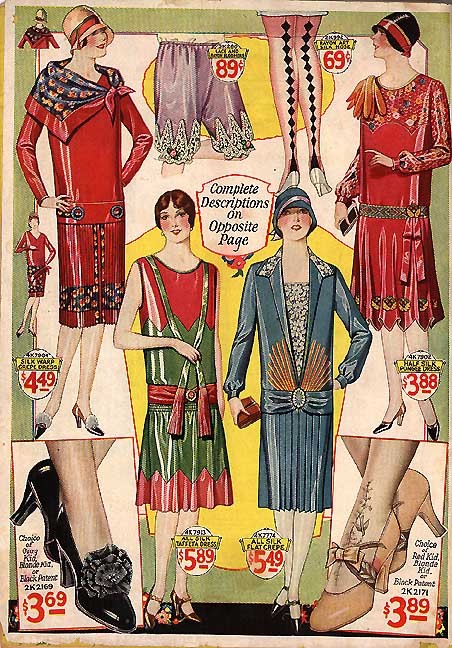
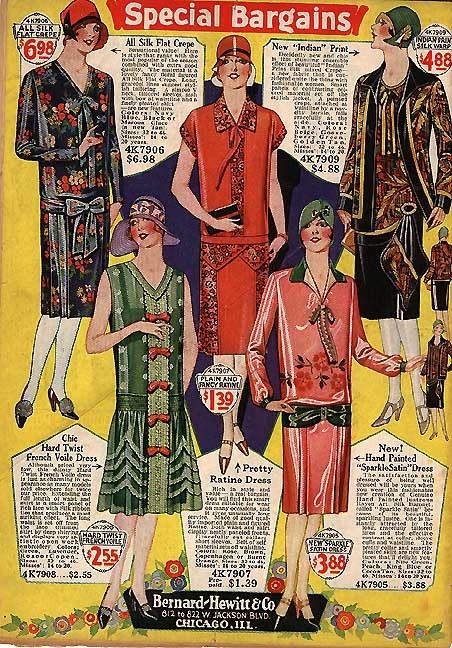
I also like how the first image reads “Summer 1928 Apparel.” Seasonal fashion, it appears, is nothing new.
